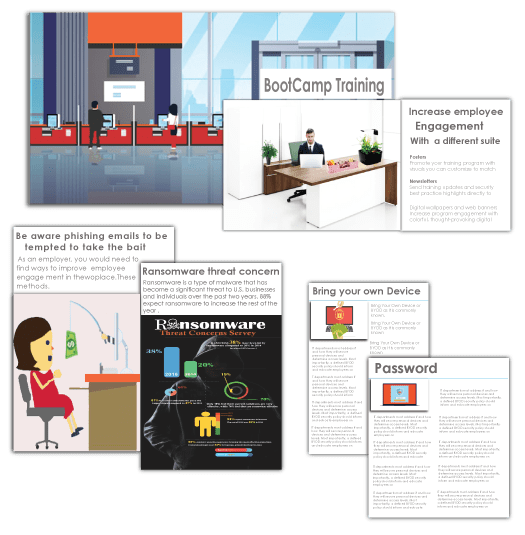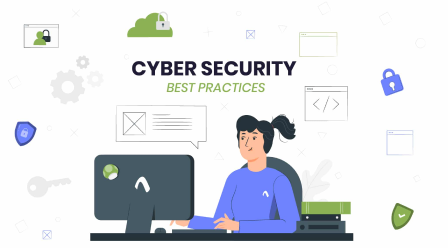The Certified Penetration Tester (CPENT) curriculum from EC-Council is all about pen tests, and it will educate you how to do them in an enterprise network environment where they must be attacked, exploited, evaded, and defended. If you've only worked with flat networks, CPENT's live practice range will teach you how to pen test IoT systems and OT systems, as well as how to write your own exploits, build your own tools, conduct advanced binaries exploitation, double pivot to access hidden networks, and customize scripts and exploits to get into the network's most inaccessible segments.
-
About this course
The Certified Penetration Tester (CPENT) curriculum from EC-Council teaches you how to conduct a successful penetration test in a corporate network that must be attacked, exploited, avoided, and protected.If you've only worked with flat networks, CPENT's live practice range will teach you how to pen test IoT systems and OT systems, as well as how to write your own exploits, build your own tools, conduct advanced binaries exploitation, double pivot to access hidden networks, and customize scripts/exploits to get into the network's innermost segments.
-
Why should you take this course?
The EC Council CPENT course is a valuable penetration testing curriculum that can help you identify yourself as a top pentester in the cybersecurity field and advance your career.You will learn how to use sophisticated penetration testing methodologies, tactics, and tools in the CPENT course, which will build your profile and increase your worth as a highly sought-after penetration tester.To top it off, you'll be able to obtain two certificates for the price of one CPENT certification.
✅100% mapped with the NICE framework.
✅100% methodology-based penetration testing program.
✅Blends both manual and automated penetration testing approaches.
✅Maps to all major Job Portals. Role Title: Penetration Tester and Security Analyst.
✅Provides strong reporting writing guidance.
✅Gives a real-world experience through an Advanced Penetration Testing Range.
✅Provides candidates with standard Pen tests for use in the field.
-
What will you learn by taking this course?
Advanced Windows Attacks
This zone has a whole forest, which you must first acquire access to before executing Silver and Gold Ticket and Kerberoasting via PowerShell or any other method.The machines will be configured with protections in place, requiring you to score points within the zone using PowerShell bypass techniques and other complex approaches.
Attacking IOT Systems
CPENT is the first certification that requires you to first locate IoT devices before gaining network access.Once on the network, you must locate the IoT device's firmware, extract it, and reverse engineer it.
Writing Exploits: Advanced Binary Exploitation
Competent pen testers must be able to find flaws in code.In this zone, you must locate and reverse engineer faulty binaries in order to build vulnerabilities that allow you to take control of the program's execution.The task is made more difficult by the requirement to get access from the perimeter before discovering the binaries.After that, you'll need to reverse engineer the code.CPENT, unlike other certifications, includes 32 and 64-bit code challenges, and some of the code will be generated with minimal non-executable stack safeguards.To exploit these binaries, you'll need to develop a driver program and then figure out how to escalate privileges. This will necessitate extensive binary exploitation skills, including the most up-to-date debugging principles and egg hunting approaches.To get your shell code to work and circumvent system protections, you must first design input code to take control of program execution and then map an area in memory.
Pentesting Operational Technology (OT)
The CPENT range includes a zone devoted to ICS SCADA networks, which the candidate must breach from the IT network side in order to obtain access to the OT network. Once you've arrived, you'll need to locate the Programmable Logic Controller (PLC) and edit the data in order to affect the OT network. The Mod Bus Communication protocol, as well as communication between the PLC and other nodes, must be intercepted.
-
Chapter 1: Introduction to Penetration Testing
-
Chapter 2: Penetration Testing Scoping and Engagement
-
Chapter 3: Open Source Intelligence (OSINT)
-
Chapter 4: Social Engineering Penetration Testing
-
Chapter 5: Network Penetration Testing – External
-
Chapter 6: Network Penetration Testing– Internal
-
Chapter 7: Network Penetration Testing – Perimeter Devices
-
Chapter 8: Web Application Penetration Testing
-
Chapter 9: Wireless Penetration Testing
-
Chapter 10: IoT Penetration Testing
-
Chapter 11: OT/SCADA Penetration Testing
-
Chapter 12: Cloud Penetration Testing
-
Chapter 13: Binary Analysis and Exploitation
-
Chapter 14: Report Writing and Post Testing Actions
-
WHAT IS PENETRATION TESTING?
Cybersecurity is of utmost importance in this digital world. Companies carry out comprehensive security testing to assess the current security posture of their organization. Penetration Testing also referred to as Pen Testing, means carrying out security tests to check whether the systems can be penetrated by malicious attackers. It requires carrying out simulated attacks on computer systems, networks or web applications with the specific objective to expose security weaknesses/ vulnerabilities that are likely to be exploited by attackers. Pen Testing insights are useful for developing a strategy to plug the security loopholes. The CPENT Training Course provides you the necessary knowledge & skills to become an expert Penetration Tester.
-
WHAT IS THE ROLE OF PENETRATION TESTER?
Penetration Testers are cybersecurity personnel authorized to carry out rigorous testing on computer systems to expose the weakness in the security systems and suggest measures on how to minimize the risk. The job of a Penetration Tester involves a range of activities like:
- Determining the number & types of systems to be tested
- Creating Penetration testing methods, scripts, and tests
- Carrying out remote/onsite tests of infrastructure security
- Simulating security breaches & test the system security
- Creating detailed reports of security issues detected and level of risk
- Providing recommendations on methodologies to lower or minimize the risks
-
WHY BECOME A CERTIFIED PENETRATION TESTING PROFESSIONAL OR CPENT?
According to research by MarketsandMarkets.com the global penetration testing market size is projected to grow from USD 1.7 billion in 2020 to USD 4.5 billion by 2025, at a Compound Annual Growth Rate (CAGR) of 21.8% from 2020 to 2025.
Thus it is quite evident that there will be an increasing demand for penetration testers in the coming years. Certified professions gain precedence during the hiring process as they have in-depth knowledge of types, phases, tools, techniques of penetration testing. Becoming a certified penetration tester thus provides a competitive edge and improves the chances of obtaining higher salaries and promotions
-
PRE-REQUISITES FOR CERTIFIED PENETRATION TESTER COURSE?
The CPENT program is the next step after the Certified Ethical Hacker (CEH) certification on the journey to the Licensed Penetration Tester (LPT) Master. However, there are no predefined eligibility criteria for those interested in attempting the CPENT exam. To Enroll in the CPENT Training Course (Certified Penetration Testing Professional) the candidate should have basic knowledge of –
- Networking (TCP/IP, cabling techniques)
- Ethical hacking techniques
- Open-source technologies – MySQL, Apache, etc.
- Wireless protocols and devices
- Web application architecture
- Firewall Fundamentals
-
WHO SHOULD TAKE CPENT TRAINING COURSE?
Professionals currently working in the following roles should attempt CPENT Training Course
- Penetration Testers
- Ethical Hackers
- Information security Consultant
- Security Testers
- Security Analysts
- Security Engineers
- Network Server Administrators
- Firewall Administrators
- System Administrators
- Risk Assessment Professionals
- System Administrators and Risk Assessment professionals
- Key Features:
- Created by a Security expert :
- Access period : 12 months
- Course duration : 40+ hours
- Quizzes & revision exams :
- Certificate of completion :
- Support : 24/7 hours

CERTIFIED PENETRATION TESTING PROFESSIONAL
Pick your preferred schedule
Why learn with us?
- We're tech career experts
- 25,000+ students worldwide
- Alternative to traditional university education
- Start a new career or advance your current one & land your dream job
- Award winning StudentCare
- Most in-demand skills for job market
- Partnered with most biggest accreditors in the world
- Exclusive student benefits

Reason to Choose CERTIFIED PENETRATION TESTING PROFESSIONAL

- Exam Pass Guarantee (live online)
- 100% Satisfaction Guarantee
- Immediate access to Aspire portal for practice exam
- Get started with Certification pathway
- Knowledge Transfer Guarantee
- Take advantage of globally recognized platform
Target Audience
- Penetration Testers
- Ethical Hackers
- Information security Consultant
- Security Testers
- Security Analysts
- Security Engineers
- Firewall Administrators
- System Administrators
- Risk Assessment Professionals

Find Your Boot Camp
Boost Engagement with delivering Communication Tools

Increase employee engagement with a different suite of communication tools like:
Posters
Promote your training program with visuals you can customize to brand... more
Newsletters
Send training updates and security best practice highlights directly... more
Digital wallpapers and web banners
Increase program engagement with colorful thought-provoking messaging... more
Training Videos/Animations
Strengthen key awareness concepts and skills through stylish visual... more
Why Aspire Tech
Award-winning courses
Aspire's award-winning online courses and programs are created and delivered by a renowned Cyber Security specialist.
The perfect fit for business
Plans for small to large businesses that are flexible to match your budget. There is a volume discount available.
Cost effective training
For a fraction of the expense of traditional classroom training, train thousands of employees in numerous locations.
